Connecticut
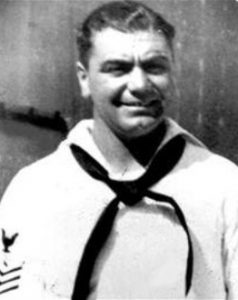 When we think of movie stars, we seldom think of them as soldiers, even if they have played a soldier on television or the movies. Nevertheless, many have served. One of my favorite shows as a kid was McHale’s Navy. McHale was played by Ernest Borgnine, who was born Ermes Effron Borgnino on January 24, 1917, in Hamden, Connecticut. Borgnine was the son of Italian immigrants. His mother, Anna (née Boselli; 1894–c. 1949), was from Carpi, near Modena. His father Camillo Borgnino (1891–1975) was a native of Ottiglio near Alessandria.
When we think of movie stars, we seldom think of them as soldiers, even if they have played a soldier on television or the movies. Nevertheless, many have served. One of my favorite shows as a kid was McHale’s Navy. McHale was played by Ernest Borgnine, who was born Ermes Effron Borgnino on January 24, 1917, in Hamden, Connecticut. Borgnine was the son of Italian immigrants. His mother, Anna (née Boselli; 1894–c. 1949), was from Carpi, near Modena. His father Camillo Borgnino (1891–1975) was a native of Ottiglio near Alessandria.
Borgnine had a normal childhood, and after high school, he enlisted in the United States Navy in October 1935. He served aboard the destroyer/minesweeper USS Lamberton and was honorably discharged from the Navy in October 1941. Then, the 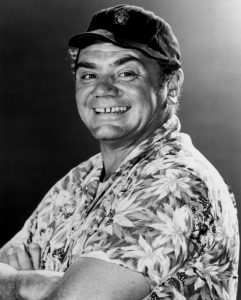 attack on Pearl Harbor on December 7, 1942, changed many things. In January 1942, Borgnine re-enlisted in the Navy. During World War II, he patrolled the Atlantic Coast on an antisubmarine warfare ship, the USS Sylph. In September 1945, he was honorably discharged from the Navy. With the two stints, Borgnine served a total of almost ten years in the Navy and obtained the grade of gunner’s mate 1st class. His military awards include the Navy Good Conduct Medal, American Defense Service Medal with Fleet Clasp, American Campaign Medal with ?3?16″ bronze star, and the World War II Victory Medal. Who knew?
attack on Pearl Harbor on December 7, 1942, changed many things. In January 1942, Borgnine re-enlisted in the Navy. During World War II, he patrolled the Atlantic Coast on an antisubmarine warfare ship, the USS Sylph. In September 1945, he was honorably discharged from the Navy. With the two stints, Borgnine served a total of almost ten years in the Navy and obtained the grade of gunner’s mate 1st class. His military awards include the Navy Good Conduct Medal, American Defense Service Medal with Fleet Clasp, American Campaign Medal with ?3?16″ bronze star, and the World War II Victory Medal. Who knew?
 To me, it seems like all this also prepared him for his most famous television show. As a veteran sailor, he knew how things were run on a ship. Of course, how much of his knowledge could be used on the show depends on the directors. If they had any good sense, they would have used his knowledge, and made the show more realistic. Still, as a kid, I doubt if I would know if it was realistic or not, and after all these years, I can’t say I would recall any of the details. Nor would I know if they were realistic or not. Nevertheless, I always liked the show, and I really liked Ernest Borgnine. I just never knew that he had been a sailor during World War II, or that he had played a part in locating and sinking submarines. I also didn’t realize that he enlisted not once, but twice, or that he served a total of ten years. Years later, on July 8, 2012, after many years as a successful actor, Ernest Borgnine died of kidney failure on July 8, 2012 at Cedars-Sinai Medical Center in Los Angeles, California. He was 95 years old.
To me, it seems like all this also prepared him for his most famous television show. As a veteran sailor, he knew how things were run on a ship. Of course, how much of his knowledge could be used on the show depends on the directors. If they had any good sense, they would have used his knowledge, and made the show more realistic. Still, as a kid, I doubt if I would know if it was realistic or not, and after all these years, I can’t say I would recall any of the details. Nor would I know if they were realistic or not. Nevertheless, I always liked the show, and I really liked Ernest Borgnine. I just never knew that he had been a sailor during World War II, or that he had played a part in locating and sinking submarines. I also didn’t realize that he enlisted not once, but twice, or that he served a total of ten years. Years later, on July 8, 2012, after many years as a successful actor, Ernest Borgnine died of kidney failure on July 8, 2012 at Cedars-Sinai Medical Center in Los Angeles, California. He was 95 years old.
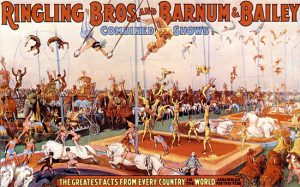 Most people have attended a circus at one time or another, although they are becoming a little more something from the past. Nevertheless, they used to be huge attractions, and when the circus came to town, almost the whole town turned out to watch the show. That was something that worked against the people of Hartford, Connecticut on July 6, 1944. At that time, Hartford was a city of approximately 13,000 people. The Independence Day festivities had just passed and now the circus was in town to continue the week’s excitement for the townspeople. The Ringling Brothers and Barnum Baily Circus was famous for its incredible show, held under a huge circus tent. At 8,000 people in attendance, about 2/3 of the town was there. It was going to be a great show, and the children of the town were beyond excited.
Most people have attended a circus at one time or another, although they are becoming a little more something from the past. Nevertheless, they used to be huge attractions, and when the circus came to town, almost the whole town turned out to watch the show. That was something that worked against the people of Hartford, Connecticut on July 6, 1944. At that time, Hartford was a city of approximately 13,000 people. The Independence Day festivities had just passed and now the circus was in town to continue the week’s excitement for the townspeople. The Ringling Brothers and Barnum Baily Circus was famous for its incredible show, held under a huge circus tent. At 8,000 people in attendance, about 2/3 of the town was there. It was going to be a great show, and the children of the town were beyond excited.
With the tent filled to capacity, a fire is the worst nightmare, but that is what they had. No one knows exactly what happened, and the 8,000 people inside really had no time in which to react. As panic spread as fact as the fire broke out under the big top of circus, killing 167 people and injuring 682. Two thirds of those who perished 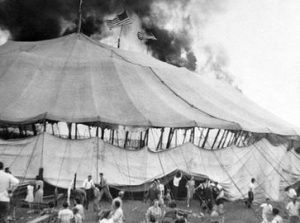 were children. The cause of the fire was unknown, but it spread at incredible speed, racing up the canvas of the circus tent. Suddenly, patches of burning canvas began falling on them from above, and a stampede for the exits began. People became trapped under fallen canvas, but most were able to rip through it and escape, but after the tent’s ropes burned and its poles gave way, the whole burning big top came crashing down, trapping those who remained inside. Within 10 minutes it was over, and some 100 children and 60 of their adult escorts were dead or dying.
were children. The cause of the fire was unknown, but it spread at incredible speed, racing up the canvas of the circus tent. Suddenly, patches of burning canvas began falling on them from above, and a stampede for the exits began. People became trapped under fallen canvas, but most were able to rip through it and escape, but after the tent’s ropes burned and its poles gave way, the whole burning big top came crashing down, trapping those who remained inside. Within 10 minutes it was over, and some 100 children and 60 of their adult escorts were dead or dying.
The fire investigation revealed that the tent had undergone a treatment with flammable paraffin thinned with three parts of gasoline to make it waterproof. These days, no on would consider using gasoline for such a purpose, but unfortunately at that time it was used. Ringling Brothers and Barnum and Bailey Circus eventually agreed to pay $5 million in compensation, and several of the organizers were convicted on manslaughter charges. In 1950, the cause was finally uncovered in the case when Robert D Segee of Circleville, Ohio, confessed to starting the Hartford circus fire. Segee claimed that he had been an arsonist since the age of six and that “an apparition of an Indian on a 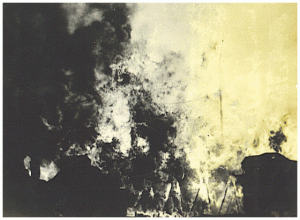 flaming horse often visited him and urged him to set fires.” In November 1950, Segee was convicted in Ohio of unrelated arson charges and sentenced to 44 years of prison time. The Hartford investigators raised doubts over his confession. Segee had a history of mental illness, and it could not be proven he was anywhere within the state of Connecticut when the fire occurred. Connecticut officials were also not allowed to question Segee, even though his alleged crime had occurred in their state. Segee, who died in 1997, denied setting the fire as late as 1994 during an interview. Because of this, many investigators, historians, and victims believe the true arsonist…if it was indeed arson…was never found.
flaming horse often visited him and urged him to set fires.” In November 1950, Segee was convicted in Ohio of unrelated arson charges and sentenced to 44 years of prison time. The Hartford investigators raised doubts over his confession. Segee had a history of mental illness, and it could not be proven he was anywhere within the state of Connecticut when the fire occurred. Connecticut officials were also not allowed to question Segee, even though his alleged crime had occurred in their state. Segee, who died in 1997, denied setting the fire as late as 1994 during an interview. Because of this, many investigators, historians, and victims believe the true arsonist…if it was indeed arson…was never found.
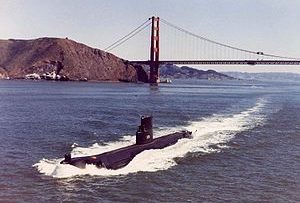 Submarines have always fascinated me. To be able to travel completely submerged for extended periods of time is quite amazing. One of the greatest submarines ever was the USS Seawolf (SSN 575). Seawolf was not the first nuclear submarine. That honor goes to the Nautilus, but the Seawolf was an amazing submarine with an amazing future ahead of her. The Seawolf was built by the General Dynamics Corporation’s Electric Boat Division, Groton, Connecticut, and was laid September 15, 1953. Mrs. W. Sterling Cole christened the SEAWOLF at the launching ceremony on July 21, 1955 under the command of Commander Richard B. Laning, United States Navy.
Submarines have always fascinated me. To be able to travel completely submerged for extended periods of time is quite amazing. One of the greatest submarines ever was the USS Seawolf (SSN 575). Seawolf was not the first nuclear submarine. That honor goes to the Nautilus, but the Seawolf was an amazing submarine with an amazing future ahead of her. The Seawolf was built by the General Dynamics Corporation’s Electric Boat Division, Groton, Connecticut, and was laid September 15, 1953. Mrs. W. Sterling Cole christened the SEAWOLF at the launching ceremony on July 21, 1955 under the command of Commander Richard B. Laning, United States Navy.
Unlike, Nautilus, the Seawolf used liquid sodium instead of water as a moderator and cooling medium. The Seawolf was to be given many honors and awards during her time of service, with one of the greatest being on September 26, 1957, when Seawolf hosted President Dwight D. 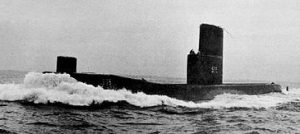 Eisenhower for a submerged run off Newport, Rhode Island. It was the first time the Commander and Chief was transported by nuclear propulsion. That makes it an amazing event for the Seawolf and for the President. Additionally, while on a port visit in Provincetown, Massachusetts, Seawolf was host to NBC telecast of “Wide, Wide World” on December 8, 1957.
Eisenhower for a submerged run off Newport, Rhode Island. It was the first time the Commander and Chief was transported by nuclear propulsion. That makes it an amazing event for the Seawolf and for the President. Additionally, while on a port visit in Provincetown, Massachusetts, Seawolf was host to NBC telecast of “Wide, Wide World” on December 8, 1957.
One of the greatest moments, however, happened on October 6, 1958. After submerging on August 7, 1958, Seawolf remained submerged for a full 60 days. During that time she was completely independent of the Earth’s atmosphere. The submarine was self sufficient and able to produce all the life sustaining air and water the crew would need for life. It was an unheard of accomplishment. Of course, that record would be broken in  the future, including twice by Seawolf herself. In 1976, Seawolf remained submerged for a US Navy record breaking 87 days. In 1977 she again went under, this time staying submerged for 79 days. Over the years of service, Seawolf received four Battle Efficiency “E” awards for excellence in battle. She received three Engineering “E” for Excellence, three Supply “E” awards, a Communications “C” award, a Damage Control “DC” award, and the Dec Seamanship Award. In April 1986 USS Seawolf (SSN 575) was decommissioned, but her name has lived on in other submarines named in her honor. The USS Seawolf (SSN 575) was truly an amazing submarine.
the future, including twice by Seawolf herself. In 1976, Seawolf remained submerged for a US Navy record breaking 87 days. In 1977 she again went under, this time staying submerged for 79 days. Over the years of service, Seawolf received four Battle Efficiency “E” awards for excellence in battle. She received three Engineering “E” for Excellence, three Supply “E” awards, a Communications “C” award, a Damage Control “DC” award, and the Dec Seamanship Award. In April 1986 USS Seawolf (SSN 575) was decommissioned, but her name has lived on in other submarines named in her honor. The USS Seawolf (SSN 575) was truly an amazing submarine.
 As automobiles became commonplace…or at least more so than they had been, people began to realize that there needed to be some controls on their usage…specially in the area of speed. Most people know that is a car or other vehicle can go fast, there will always be someone out there, who wants to push the envelope and see just how fast it will go, throwing caution to the wind. With increased speeds would also follow, increased numbers of accidents. There would need to be some rules to follow.
As automobiles became commonplace…or at least more so than they had been, people began to realize that there needed to be some controls on their usage…specially in the area of speed. Most people know that is a car or other vehicle can go fast, there will always be someone out there, who wants to push the envelope and see just how fast it will go, throwing caution to the wind. With increased speeds would also follow, increased numbers of accidents. There would need to be some rules to follow.
There were already speed limits in the United States for non-motorized vehicles. In 1652, the colony of New Amsterdam, which is now New York, issued a decree stating that “[N]o wagons, carts or sleighs shall be run, rode or driven at a gallop” at the risk of incurring a fine starting at “two pounds Flemish,” or about $150 in today’s currency. In 1899, the New York City cabdriver Jacob German was arrested for driving his electric taxi at 12 miles per hour, but did the prior law really apply electric cars? It was becoming more and more obvious that some sort of legislation was necessary to ensure the safety of those operating these new machines, and those around them. So began the path to Connecticut’s 1901 speed limit legislation. Representative Robert Woodruff submitted a 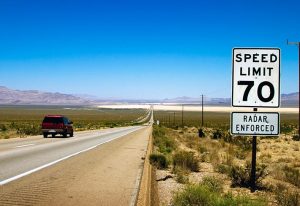 bill to the State General Assembly proposing a motor-vehicles speed limit of 8 miles per hour within city limits and 12 miles per hour outside. While the law passed in May of 1901 specified higher speed limits, it required drivers to slow down upon approaching or passing horse-drawn vehicles, and come to a complete stop if necessary to avoid scaring the animals. I can’t imagine some of the restrictions listed there, because people would be stopped more than they were driving, but you have to start somewhere, and Connecticut was that starting point, when, on May 21, 1901 it became the first state to pass a law regulating motor vehicles, limiting their speed to 12 miles per hour in cities and 15 miles per hour on country roads.
bill to the State General Assembly proposing a motor-vehicles speed limit of 8 miles per hour within city limits and 12 miles per hour outside. While the law passed in May of 1901 specified higher speed limits, it required drivers to slow down upon approaching or passing horse-drawn vehicles, and come to a complete stop if necessary to avoid scaring the animals. I can’t imagine some of the restrictions listed there, because people would be stopped more than they were driving, but you have to start somewhere, and Connecticut was that starting point, when, on May 21, 1901 it became the first state to pass a law regulating motor vehicles, limiting their speed to 12 miles per hour in cities and 15 miles per hour on country roads.
Immediately following this landmark legislation, New York City went to work to keep up, and introduced the world’s first comprehensive traffic code in 1903. Adoption of speed regulations and other traffic codes was a slow and uneven process across the nation, however. As late as 1930, a dozen states had no speed limit, while 28 states did not even require a driver’s license to operate a motor vehicle. Rising fuel prices contributed to the lowering of speed limits in several states in the early 1970s, and in January 1974 President Richard Nixon 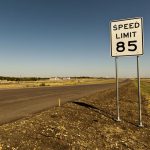 signed a national speed limit of 55 miles per hour into law. These measures led to a welcome reduction in the nation’s traffic fatality rate, which dropped from 4.28 per million miles of travel in 1972 to 3.33 in 1974 and a low of 2.73 in 1983.
signed a national speed limit of 55 miles per hour into law. These measures led to a welcome reduction in the nation’s traffic fatality rate, which dropped from 4.28 per million miles of travel in 1972 to 3.33 in 1974 and a low of 2.73 in 1983.
Concerns about fuel availability and cost later subsided, and in 1987 Congress allowed states to increase speed limits on rural interstates to 65 mph. The National Highway System Designation Act of 1995 repealed the maximum speed limit. This returned control of setting speed limits to the states, many of which soon raised the limits to 70 mph and higher on a portion of their roads, including rural and urban interstates and limited access roads.

 So often, when we have a holiday, people tend to think that it is just another day to have a family dinner and a day off of work. Often, they are celebrating the day for the wrong reason, but not so today. Labor Day is a day for our nation to pay tribute to its workers. No nation can be strong if it has no workers. So, as a show of gratitude, Labor Day was set aside to allow a day of rest for the American worker. When our nation was founded, there was largely nothing here. The native Americans lived in Teepees, so they could be mobile. They needed to follow the buffalo because that was their food supply. But, we had come from nations where there were houses and farms, and ways to get the things we needed.
So often, when we have a holiday, people tend to think that it is just another day to have a family dinner and a day off of work. Often, they are celebrating the day for the wrong reason, but not so today. Labor Day is a day for our nation to pay tribute to its workers. No nation can be strong if it has no workers. So, as a show of gratitude, Labor Day was set aside to allow a day of rest for the American worker. When our nation was founded, there was largely nothing here. The native Americans lived in Teepees, so they could be mobile. They needed to follow the buffalo because that was their food supply. But, we had come from nations where there were houses and farms, and ways to get the things we needed.
Nevertheless, this was a new nation, and it was going to take a lot of hard work to turn it into the great nation it has become. The work was going to be a lot of hard physical labor. We would also need those who would teach our children and others so that they could become doctors, scientists, inventors, and all the other jobs that would be needed to take this from a vast empty land, to a thriving nation that would be able to bring about the dreams that we all came over here to fulfill.
After a time of hard work, and much growth, the nation began to give increasing emphasis to a Labor Day holiday. It was decided that we, as a nation, needed to thank our laborers for all they had done to build this country. The first bill to be introduced was into the New York legislature, but the first state to pass a law was Oregon, on February 21, 1887. Over the course of that year, four more states passed legislation to honor laborers through a Labor Day holiday that was created by legislative enactment. Those states were Colorado, Massachusetts, New Jersey, and New York. By the end of the decade, Connecticut, Nebraska, and Pennsylvania were also listed among the states honoring laborers with a Labor Day holiday. By 1894, 23 other states had adopted the holiday in honor of workers, and on June 28 of that year, Congress passed an act making the first Monday in September of each year a legal holiday in the District of Columbia and the territories.
The first Labor Day holiday was celebrated on Tuesday, September 5, 1882, in New York City, in accordance with the plans of the Central Labor Union. The day began with a parade and continued on with lots of festivities. The Central Labor Union held its second Labor Day holiday just a year later, on September 5, 1883. That was rather odd, considering the fact that the holiday didn’t become official until 1887, and then it wasn’t in New York City. Later, like many holidays, it began to make less sense to keep the holiday on the fifth, and so the first Monday in September was chosen to be the permanent time to celebrate it. That makes sense when you think about it. If you are going to celebrate the laborers, give them a three day weekend. After all, that is 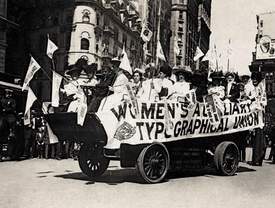
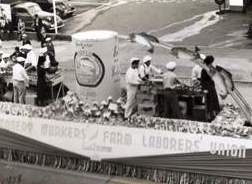 cause for celebration for most laborers. Of course, as we all know, the holiday doesn’t give every worker the day off. That would be almost impossible for all the obvious reasons. Nevertheless, as Labor Day arrives, I hope that each and every worker knows that whether they get the day off or not, this grateful nation has set aside this day to celebrate them, and to thank them for making this nation great. Happy Labor Day to workers everywhere!!
cause for celebration for most laborers. Of course, as we all know, the holiday doesn’t give every worker the day off. That would be almost impossible for all the obvious reasons. Nevertheless, as Labor Day arrives, I hope that each and every worker knows that whether they get the day off or not, this grateful nation has set aside this day to celebrate them, and to thank them for making this nation great. Happy Labor Day to workers everywhere!!
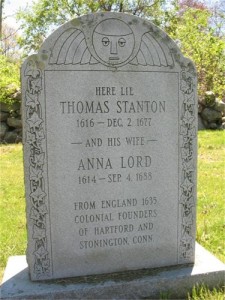 In trying to connect the Stanton side that exists through my dad’s half brother, Norman Willis Spencer, to the Stanton side that exists in Bob’s family through his grandma, Nettie Noyes Knox, I have come up with some interesting information. While I have not made the connection that I’m almost certain exists between the two sides, I did find out that within the Noyes side of the family, there is a Stanton family member who was of some significance to America too. His name was Thomas Stanton, and he was Bob’s 7th great grandfather. There are many ways for a person to have a degree of influence on American history, or history of any nation. Some people become kings or presidents. Others might have been great warriors, while still others might have made some great discovery.
In trying to connect the Stanton side that exists through my dad’s half brother, Norman Willis Spencer, to the Stanton side that exists in Bob’s family through his grandma, Nettie Noyes Knox, I have come up with some interesting information. While I have not made the connection that I’m almost certain exists between the two sides, I did find out that within the Noyes side of the family, there is a Stanton family member who was of some significance to America too. His name was Thomas Stanton, and he was Bob’s 7th great grandfather. There are many ways for a person to have a degree of influence on American history, or history of any nation. Some people become kings or presidents. Others might have been great warriors, while still others might have made some great discovery.
Thomas Stanton was a trader and an accomplished Indian interpreter and negotiator in the colony of Connecticut. He is first noted in historical records as an interpreter for John Winthrop Jr in 1636. He fought in the Pequot War, which took place between 1634 and 1638. He nearly lost his life in the Fairfield Swamp Fight in 1637. In 1638 he was a delegate at the Treaty of Hartford, which ended the war. In 1643, the United Colonies of New England appointed Stanton as Indian Interpreter.
He began a close alliance with the Thomas Lord family, who may have been friends from England and who had recently emigrated from Towcester, England. He married Thomas Lord’s daughter, Anna Lord, about 1636 and went into a merchant business alliance with Richard Lord. Some of Thomas’ land transactions involved serious difficulties, because people often sold and resold land without obtaining a clear title. An Indian sachem gave Quonochontaug to Stanton, but did the chief really own all of this land? A Stanton tract might overlap a tract claimed by another settler. These and other transactions like them, resulted in lengthy and costly litigation. Questions about the ownership of some of Stanton’s land and ambiguities in the will led to years of family and legal fighting.
But, probably the biggest claim to fame that Thomas Stanton had was that he was one of the four founders of Stonington, Connecticut, and one of the first settlers of Hartford, Connecticut. The present territory of Stonington was part of lands that had belonged to the Pequot people, who referred to the areas making up Stonington as Pawcatuck and Mistack. It was named 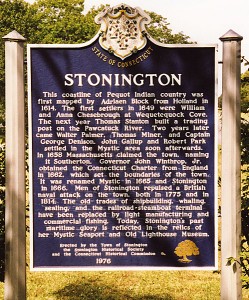 “Souther Towne” or Southerton by Massachusetts in 1658. It became part of Connecticut in 1662 when Connecticut received its royal charter. Southerton was renamed “Mistick” in 1665 and again renamed Stonington in 1666. Thomas Miner, Walter Palmer, William Chesebrough and Thomas Stanton were its four founders.
“Souther Towne” or Southerton by Massachusetts in 1658. It became part of Connecticut in 1662 when Connecticut received its royal charter. Southerton was renamed “Mistick” in 1665 and again renamed Stonington in 1666. Thomas Miner, Walter Palmer, William Chesebrough and Thomas Stanton were its four founders.
Upon Thomas death on Dec 2,1677, his will could not be located, and legal battles concerning the distribution of his property continued for years. When his wife, Anna died 11 years later, his estate was still unsettled. At some point, when going through some papers belonging to the city of Hartford, Connecticut, someone found the will, but that would not bring the estate to the point of being settled. The estate remained unsettled for a total of 40 years before the will was accepted and the estate settled. That is the kind of thing that can happen when money and land are involved.
 We just got back from taking our grandsons Chris, Caalab, and Josh for ice cream. Our granddaughter, Shai couldn’t come because she had to work unfortunately. That seems like such a little thing, but when I see the faces of the Connecticut school shooting, I realize just how thankful I am that my grandchildren are here with me. So many people are hurting right now. Whether they knew anyone involved or not. Not knowing anyone involved, does nothing to stop the pain a nation feels on this day. You can’t think about it without feeling pain…pain for the parents who lost children…pain for the children and spouses who lost their mom, dad, husband, or wife…pain for friends who have lost friends…pain for a town who has lost so many of its members…pain for a nation who must watch in stunned disbelief as we go through this…again!!
We just got back from taking our grandsons Chris, Caalab, and Josh for ice cream. Our granddaughter, Shai couldn’t come because she had to work unfortunately. That seems like such a little thing, but when I see the faces of the Connecticut school shooting, I realize just how thankful I am that my grandchildren are here with me. So many people are hurting right now. Whether they knew anyone involved or not. Not knowing anyone involved, does nothing to stop the pain a nation feels on this day. You can’t think about it without feeling pain…pain for the parents who lost children…pain for the children and spouses who lost their mom, dad, husband, or wife…pain for friends who have lost friends…pain for a town who has lost so many of its members…pain for a nation who must watch in stunned disbelief as we go through this…again!!
We each have a tendency at a time like this to want to hold our loved ones just a little closer…to try to ease the pain that each of us feels inside. No one is immune. Everyone knows that this has happened, and no one can understand why. Why did this man decide that his life was over, and why did he feel the need to take so many with him? Questions that will never really be answered, and even if they are, the answers won’t make sense…because this act was senseless.
As I sat at Dairy Queen, enjoying the time I feel so very blessed to have, my mind drifted back to the poor families of Newtown, Connecticut, and their empty homes and arms tonight… to their broken hearts, and the nightmare they can’t wake up from, because it is real. A renewed sadness filled my heart, as well as a sense that things are very wrong in our world these days. All we can do now is pray over those with broken hearts and lives, and those who would destroy the lives of others.

